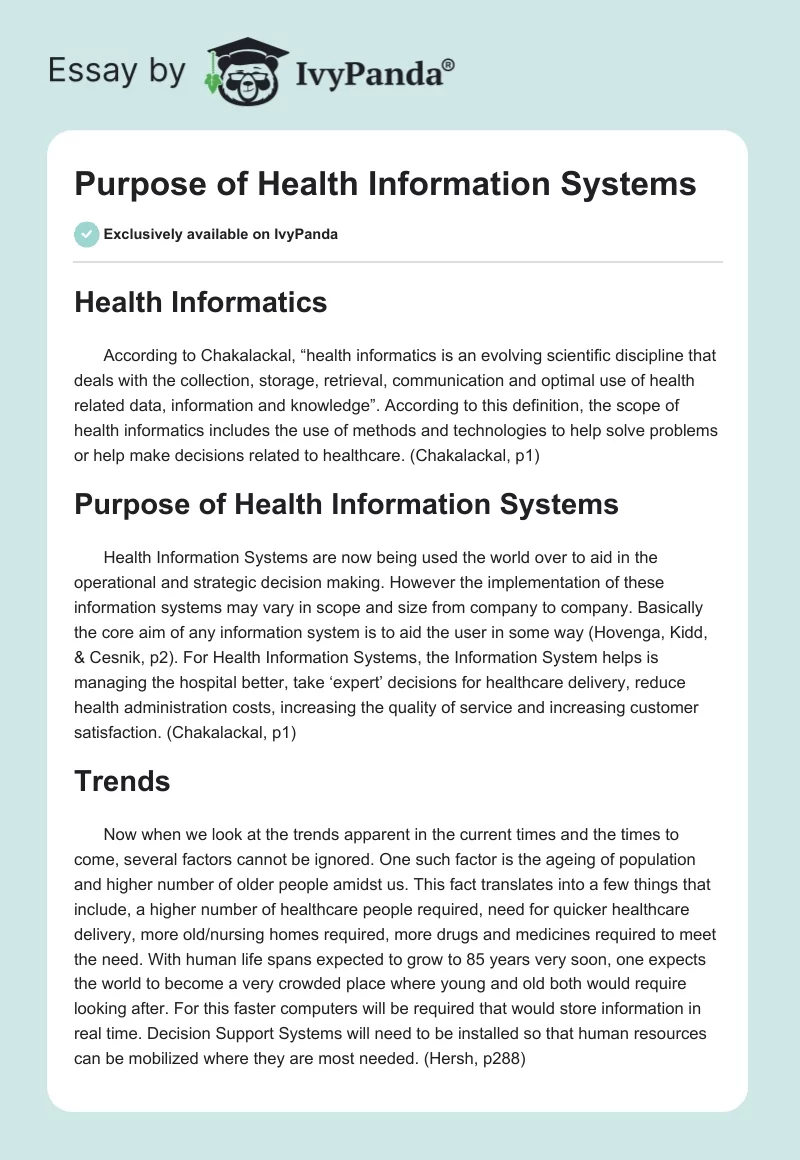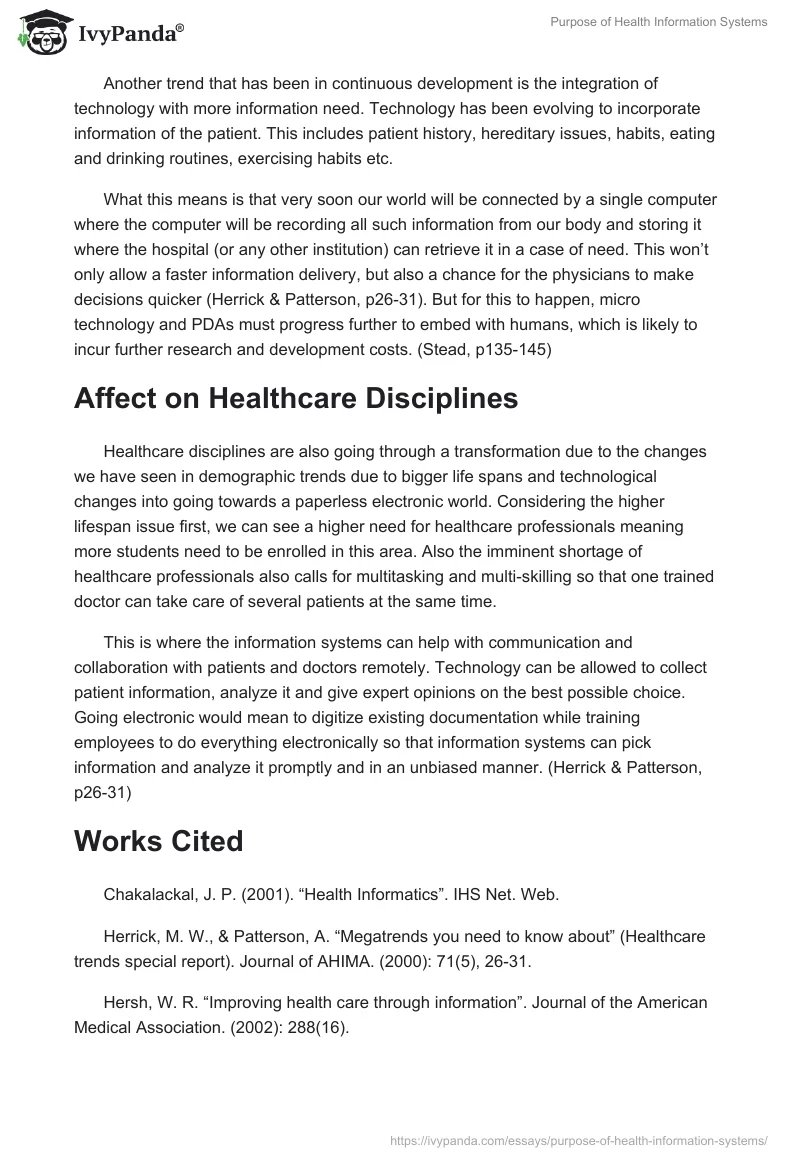Health Informatics
According to Chakalackal, “health informatics is an evolving scientific discipline that deals with the collection, storage, retrieval, communication and optimal use of health related data, information and knowledge”. According to this definition, the scope of health informatics includes the use of methods and technologies to help solve problems or help make decisions related to healthcare. (Chakalackal, p1)
Purpose of Health Information Systems
Health Information Systems are now being used the world over to aid in the operational and strategic decision making. However the implementation of these information systems may vary in scope and size from company to company. Basically the core aim of any information system is to aid the user in some way (Hovenga, Kidd, & Cesnik, p2). For Health Information Systems, the Information System helps is managing the hospital better, take ‘expert’ decisions for healthcare delivery, reduce health administration costs, increasing the quality of service and increasing customer satisfaction. (Chakalackal, p1)
Trends
Now when we look at the trends apparent in the current times and the times to come, several factors cannot be ignored. One such factor is the ageing of population and higher number of older people amidst us. This fact translates into a few things that include, a higher number of healthcare people required, need for quicker healthcare delivery, more old/nursing homes required, more drugs and medicines required to meet the need. With human life spans expected to grow to 85 years very soon, one expects the world to become a very crowded place where young and old both would require looking after. For this faster computers will be required that would store information in real time. Decision Support Systems will need to be installed so that human resources can be mobilized where they are most needed. (Hersh, p288)
Another trend that has been in continuous development is the integration of technology with more information need. Technology has been evolving to incorporate information of the patient. This includes patient history, hereditary issues, habits, eating and drinking routines, exercising habits etc.
What this means is that very soon our world will be connected by a single computer where the computer will be recording all such information from our body and storing it where the hospital (or any other institution) can retrieve it in a case of need. This won’t only allow a faster information delivery, but also a chance for the physicians to make decisions quicker (Herrick & Patterson, p26-31). But for this to happen, micro technology and PDAs must progress further to embed with humans, which is likely to incur further research and development costs. (Stead, p135-145)
Affect on Healthcare Disciplines
Healthcare disciplines are also going through a transformation due to the changes we have seen in demographic trends due to bigger life spans and technological changes into going towards a paperless electronic world. Considering the higher lifespan issue first, we can see a higher need for healthcare professionals meaning more students need to be enrolled in this area. Also the imminent shortage of healthcare professionals also calls for multitasking and multi-skilling so that one trained doctor can take care of several patients at the same time.
This is where the information systems can help with communication and collaboration with patients and doctors remotely. Technology can be allowed to collect patient information, analyze it and give expert opinions on the best possible choice. Going electronic would mean to digitize existing documentation while training employees to do everything electronically so that information systems can pick information and analyze it promptly and in an unbiased manner. (Herrick & Patterson, p26-31)
Works Cited
Chakalackal, J. P. (2001). “Health Informatics”. IHS Net. Web.
Herrick, M. W., & Patterson, A. “Megatrends you need to know about” (Healthcare trends special report). Journal of AHIMA. (2000): 71(5), 26-31.
Hersh, W. R. “Improving health care through information”. Journal of the American Medical Association. (2002): 288(16).
Hovenga, E., Kidd, M., & Cesnik, B. Health informatics: An overview. Chapter II. Australia. Churchill Livingstone. (1996).
Painter, K. “Male life span increasing”. USA Today. Web.
Stead, W. W., Miller, R. A., Musen, M. A., & Hersh, W. R. “Integration and Beyond”. Journal of the American Medical Informatics Association. (2000): 7, 135-145.


